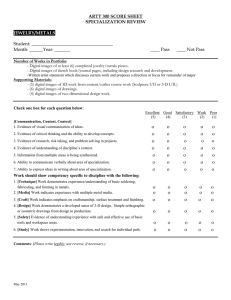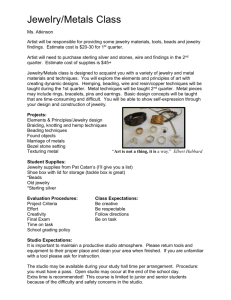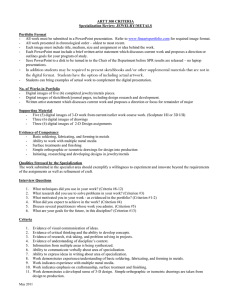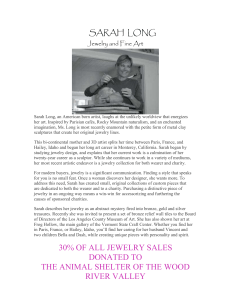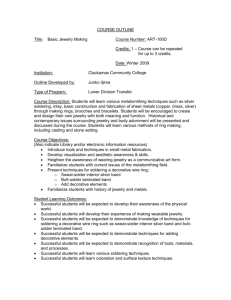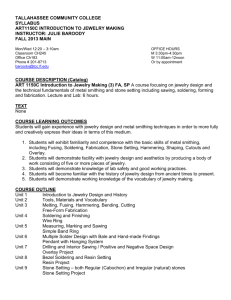Background Sheet #3 Mining Techniques
advertisement
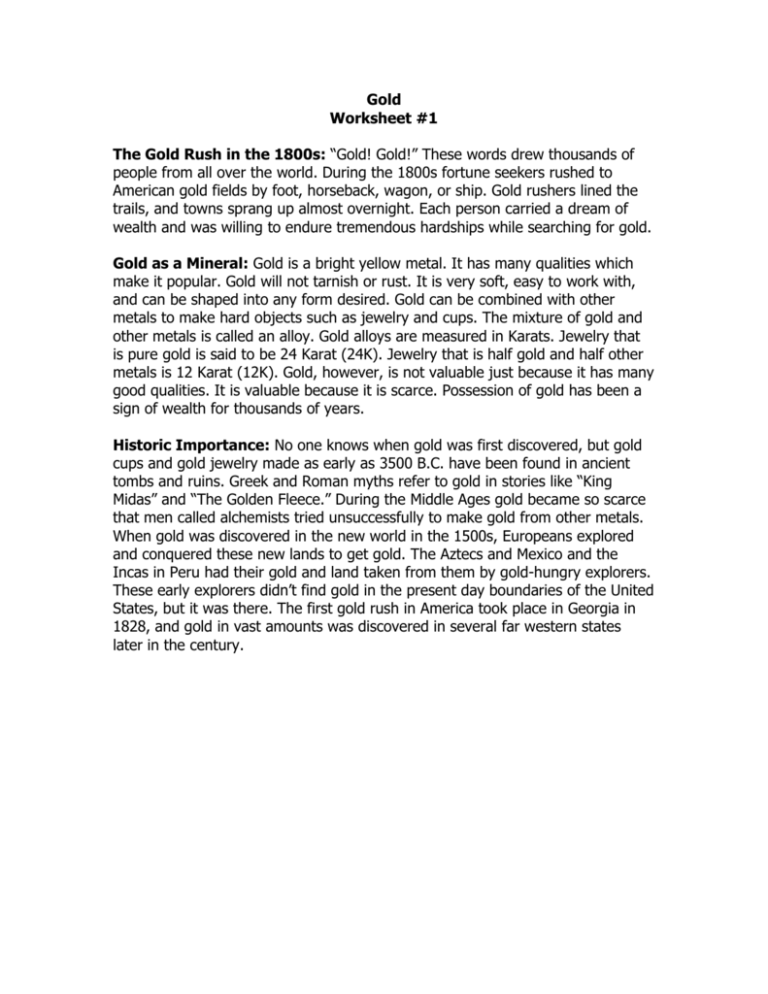
Gold Worksheet #1 The Gold Rush in the 1800s: “Gold! Gold!” These words drew thousands of people from all over the world. During the 1800s fortune seekers rushed to American gold fields by foot, horseback, wagon, or ship. Gold rushers lined the trails, and towns sprang up almost overnight. Each person carried a dream of wealth and was willing to endure tremendous hardships while searching for gold. Gold as a Mineral: Gold is a bright yellow metal. It has many qualities which make it popular. Gold will not tarnish or rust. It is very soft, easy to work with, and can be shaped into any form desired. Gold can be combined with other metals to make hard objects such as jewelry and cups. The mixture of gold and other metals is called an alloy. Gold alloys are measured in Karats. Jewelry that is pure gold is said to be 24 Karat (24K). Jewelry that is half gold and half other metals is 12 Karat (12K). Gold, however, is not valuable just because it has many good qualities. It is valuable because it is scarce. Possession of gold has been a sign of wealth for thousands of years. Historic Importance: No one knows when gold was first discovered, but gold cups and gold jewelry made as early as 3500 B.C. have been found in ancient tombs and ruins. Greek and Roman myths refer to gold in stories like “King Midas” and “The Golden Fleece.” During the Middle Ages gold became so scarce that men called alchemists tried unsuccessfully to make gold from other metals. When gold was discovered in the new world in the 1500s, Europeans explored and conquered these new lands to get gold. The Aztecs and Mexico and the Incas in Peru had their gold and land taken from them by gold-hungry explorers. These early explorers didn’t find gold in the present day boundaries of the United States, but it was there. The first gold rush in America took place in Georgia in 1828, and gold in vast amounts was discovered in several far western states later in the century.
